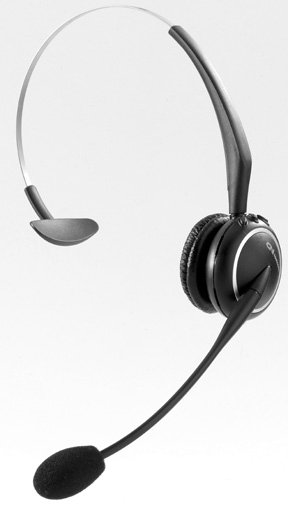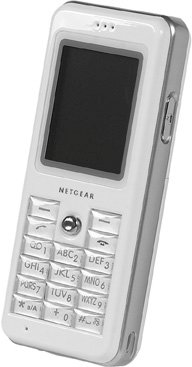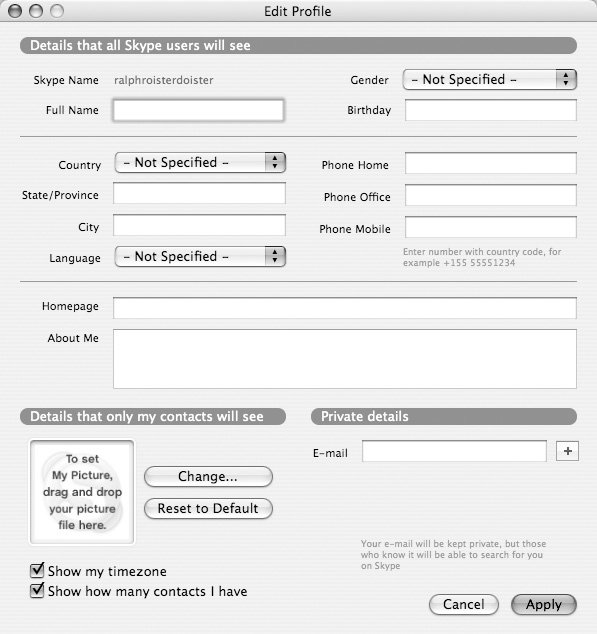18.1. Skype: Computer-to-Phone Plans Skype (www.skype.com)is huge . It's a free program for Mac, Windows, or Linux that 100 million people around the world are using to make free phone calls across the Internet. (It's owned by eBay. Perhaps you've heard of it?) Most of these fans are using Skype to make free computer-to-computer calls, just like the audio chats described in Chapter 15. That's when you and your chat partner each wear a headset, click a name in the Buddy list, and begin speaking normally. You enjoy astonishing, crystal-clear sound qualityand you pay nothing . So what's Skype got to do with ordinary phones? It turns out that Skype actually does let you call actual telephone numbers , so your mother can pick up her actual telephone to answer. She never needs to know that you're sitting at your computerand paying only 2.1 cents a minute, even though she's on another continent . That's the appeal of the SkypeOut service. (Skype increased its appeal even more in spring 2006 by announcing that calls to anyone in the U.S. and Canada on any phone would be free for the rest of the year.) Here's a capsule description of SkypeOut's advantages and disadvantages: -
Pros . You get an actual phone number that people can call (something you don't get with instant message audio chats). Calls you make to other computers are freeand calls you make to telephone numbers are dirt-cheap. SkypeOut is especially nice if you travel with your laptop, particularly to other parts of the world where international calls are astronomically expensive and you can't use your cellphone. Anywhere you can get a broadband Internet connection for your laptop, you can VoIP (and not have to worry about finding someone online or using a compatible program for an IM audio chat). -
Cons . You're shackled to your computer if you need to make a call (but see Section 21.2 for a way to free yourself to roam around). Depending on your computer's sound card, the audio quality might be noticeably worse than using a regular phone or a digital telephone service. (That said, many Skypesters report better call quality, especially compared to cellphones .) And VoIP through the computer may not be a natural fit for some people. 18.1.1. What You Need for Skype To use Skype, your shopping list requires these items: -
Skype, the program . Download the software from Skype's Web site (www.skype.com/download). On the PC side, you need Windows 2000, XP, or Vista; Macintosh people need at least Mac OS X 10.3 or later. There's even Skype software on the download page for the Linux crowd and people who use Windows Mobile-enabled smartphones. -
Some sort of speaker-and-microphone combo . In addition to keeping your calls more private, a headset/mic combo can save you some back, shoulder, and voice strain, especially if you talk on the phone a lot. You can find headsets for less than $20 for a simple, lightweight model or pay as much as $300 for a futuristic version like the Plantronics CS50 USB VoIP Wireless Headset System. Plug the base station into your computer's USB port and you can meander up to 200 feet away while you talk. Wireless headsets, like the one shown in Figure 18-1, offer a great way to talk all day without getting a stiff neck. Figure 18-1. Wireless VoIP-ready headset-microphone combos like the GN Netcom 9120 take a load off your shoulder. With a base station that plugs into the computer, you can even get up and stretch your legs without getting tangled up in the phone cord.  If you want to go blue chip, you can invest in a fancy VoIP handset that looks just like a regular phone except that it plugs into a USB or Ethernet port instead of a phone jack. Several companies make phones just for the Skype service and software (click the Shop link on the Skype site to see phones, headsets, and more). Expect to pay anywhere from $40 for a standard handset to $150 for a cordless model. BUYERS' GUIDE
Buying VoIP Gear | | Skype has become so popular, it's spawned an entire industry of add-on gear. You can shop for VoIP hardware at online megastores like Amazon (www.amazon.com), office-supply sites like Staples (www. staples .com), or places that specialize in phone stuff like the Ahern Store (www.ahernstore.com). Products like the $60 VoSky Call Center box (www.vosky.com) free you from having to sit at your computer; it routes your Skype calls to any phone, landline or cell . It also lets you call your Skype pals from your cellphone by dialing your home number, punching in your password, and then dialing your contact's Skype number. The box also forwards incoming Skype calls to any phone number you choose, so you don't have to sit home and wait by the screen for someone to call. You might also consider buying a special phone handset that has VoIP built-in. You can plug it into any computer's USB port to listen to your mountain of voice messages or place calls. On airlines (like Lufthansa) that offer in-flight Internet access, you can even talk on a VoIP phone handset even when the captain requests that you turn off all cellphones in the cabin If you do pick out a VoIP handset, make sure it's compatible with your operating system (some are Windows-only). Skype is also teaming up with Netgear (a company that specializes in home-networking hardware) to release a Skype-enabled WiFi phone in mid-2006. As long as it can pick up a signal from a nearby wireless network, the Netgear Skype SPH101 WiFi phone (shown in Figure 18-2) can make Skype calls just like using Skype from your computer. With a suggested list price of $300, though, going wireless with a Skype WiFi handset bites early adopters hardright in the wallet. |
Figure 18-2. You can Skype in mobile style with the Netgear Skype WiFi SPH101 wireless phone. Anywhere you can get a wireless network signal, you can call your Skype buddies for freeor call regular phones at those low Skype rates (Section 18.1.1). Like Skype on the desktop, Skype on a cellphone shows you who's online and available to chat.  On the low end, you can get a $20 headset that plugs into the computer's USB port and works fine with Skype, although you'll feel like Cindy at Time magazine, waiting to take someone's order. And if you're on a bargain- basement budget, just use your computer's sound card, speakers , and built-in microphone, although you may sound like you're locked in a basement. 18.1.2. Starting Up with Skype As part of Skype's installation process, you create an account, including a name and password, just as you do when setting up an email account, instant messaging account, or an account on a Web site. This is your Skype name , which your friends need to know in order to find you and call you on Skype's system.
Tip: As you create your Skype account, you're asked for your country, city, and email addressyour own entry in the Skype telephone directory, as shown in Figure 18-3. Privacy-minded people (and those hassled by too many telemarketers during dinner) may be tempted to type in a fake name or leave everything blank. If you do this, however, your friends won't be able to look you up in the Skype directory. (Then again, you can always email them with your Skype name.)
Finally, you fill in your Skype address book with the Skype names of all your friends. If the Find command doesn't work, call or shoot them a message and ask them for their Skype names . To add someone's name to your Skype address book, choose Tools  Add a Contact. Once youve got some friends listed in your address book, you're ready to take the plunge and call them up. Add a Contact. Once youve got some friends listed in your address book, you're ready to take the plunge and call them up. 18.1.3. Making Calls To call somebody you've added to your Contacts list, either right-click the name in the Contacts list and choose Call This Contact, shown at left in Figure 18-4, or click the name and then the green phone icon at the bottom of the screen. You hear the phone ring either through your computer's speakers, your handset, or your headset. Then you hear your buddy say, "Hello?" (If your friend isn't home at the time, you hear a Skype answering machine message [Figure 18-4, right].) Figure 18-3. As part of your Skype setup, you have the opportunity to provide both public and private details about yourself. People who don't want to get Skyped out of the blue (or who aren't using Skype as a de facto dating service) typically skip most of the blanks in this box. 
To make calls to real telephone numbers, you have to set up a SkypeOut account and use your credit card to buy some SkypeCredit. Calls to numbers around the world are just a few cents a minute.
Tip: If you want to let the world know you're around to receive calls from other connected folks, Skype offers a Skype Me mode; it's a great way to test Skype's free service. To find people who want to be "Skyped," choose Tools  Search for Skype Users Search for Skype Users  Advanced, choose "Search for people who are in 'Skype Me Mode," and click Search. Some "Skype Me" regulars are bound to be whopping nutbars. Some are normal people who want to connect internationally to sharpen their language skills. Others want to test their hardware, and some are just bored. To put yourself in Skype Me mode, choose File Advanced, choose "Search for people who are in 'Skype Me Mode," and click Search. Some "Skype Me" regulars are bound to be whopping nutbars. Some are normal people who want to connect internationally to sharpen their language skills. Others want to test their hardware, and some are just bored. To put yourself in Skype Me mode, choose File  Change Status Change Status  Skype Me. Skype Me.
18.1.4. Receiving Calls Receiving a call from another Skype fan doesn't take a whole lot of effort. The Skype software must be running at the time, of course. In general, it loads automatically when you start your computeran option you can turn off in the Tools  Options Options  Advanced dialog box (Windows), or Skype Advanced dialog box (Windows), or Skype  Preferences Preferences  General (Mac). General (Mac). Once loaded, the program waits patiently for incoming calls. You'll spot Skype's icon in your Windows taskbar or Mac OS X dock. (The little white checkmark inside the Windows icon, shown in the bottom corner of Figure 18-5 [bottom] lets you know you're online and able to receive calls.) If you don't see the Skype icon, open the program manually (on a PC, choose Start  All Programs All Programs  Skype; Mac fans should choose Home Skype; Mac fans should choose Home  Applications Applications  Skype). When someone calls you, a message pops up onscreen, as shown in Figure 18-5 (top). Click the phone icon to answer the call and start talking. Skype). When someone calls you, a message pops up onscreen, as shown in Figure 18-5 (top). Click the phone icon to answer the call and start talking. 18.1.5. SkypeIn If you call people on their telephones with SkypeOut, it only makes sense that people with regular telephones should be able to call you at your computer. Figure 18-5. Top: Skype alerts you with a message in the bottom right corner of your screen when somebody calls you on your Skypeline. Click the phone icon (circled) to answer the incoming call.
Bottom: To screen your calls and see who's ringing you, check the bottom of the Skype window. The caller's Skype name is listed, which may or may not have anything to do with the person's real name. 
POWER USERS' CLINIC
Troubleshooting Skype | | As simple as using Skype sounds, it can be complicated technically because it combines a lot of things: the Internet, hardware and software on your computer, and networking (which is a special brand of Jedi knowledge all its own). If any one of these factors isn't working right, your fancy-free phone fun comes to a grinding halt. Here's how to fix some of the more common hiccups you'll experience in Skype, which can make it so your friends can't see or hear you: -
Sign off and on again to show your online availability . Sometimes this action gives your software a swift kick and reconnects it with Skype's database so other Skype types see that you're online and accepting calls. -
Make sure you appear as Online . Nobody can call you directly if your Status isn't listed as Online. To confirm that you're actually seen as Online, choose File  Change Status Change Status  Online. Online. -
Check your sound levels . Skype relies on your computer's hardware for both transmitting and playing back sound. If you and your friend are having trouble hearing each other, check your PC's sound control panel and make sure the Mute option isn't turned on for any of the following settings: Microphone, WAV/MP3, and Play Control. Also, slide their volume levels to the top of the bar to ensure full volume. Mac fans should check the Sound area in the System Preferences to make sure the Input and Output settings aren't muted or set too low. -
Check your Internet connection . Without a live Internet connection, you're an island unto yourself and isolated from the rest of the world. Make sure your computer has a working broadband connection. One way to test it: If you can download email or use your Web browser to visit Web sites, your Internet connection isn't the problem here. |
They can, thanks to a similar service called SkypeIn. It gives you a phone number that non-Skype folks, using their ancient telephones, can use to call you up on your computer. And for that rare moment when you're offline or not around to be Skyped, the SkypeIn service (which costs around $40 a year) comes with free Skype Voicemail to collect the messages you miss .
Tip: Many serious Skypers expand their service by downloading and installing plug-ins , which add features like voice recording and integration with email programs. The Skype site offers browser and email-program toolbars for Windows, and even a Mac OS X widget to dial calls and look up country codes and calling rates. To check out extensions like these, read about VoIP phones, find lists of other Skype community sites, or chill with other Skype fans, drop by SummitCircle (www.summitcircle.com). And for thoughtful posts on big issues like the state of online communication, visit SkypeJournal (www.skypejournal.com).
|

 Search for Skype Users
Search for Skype Users  Advanced, choose "Search for people who are in 'Skype Me Mode," and click Search. Some "Skype Me" regulars are bound to be whopping nutbars. Some are normal people who want to connect internationally to sharpen their language skills. Others want to test their hardware, and some are just bored. To put yourself in Skype Me mode, choose File
Advanced, choose "Search for people who are in 'Skype Me Mode," and click Search. Some "Skype Me" regulars are bound to be whopping nutbars. Some are normal people who want to connect internationally to sharpen their language skills. Others want to test their hardware, and some are just bored. To put yourself in Skype Me mode, choose File  Change Status
Change Status  Skype Me.
Skype Me. 

